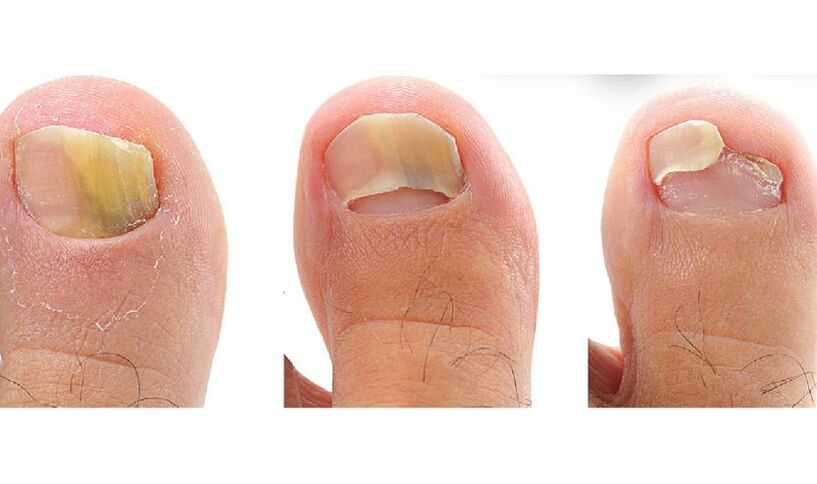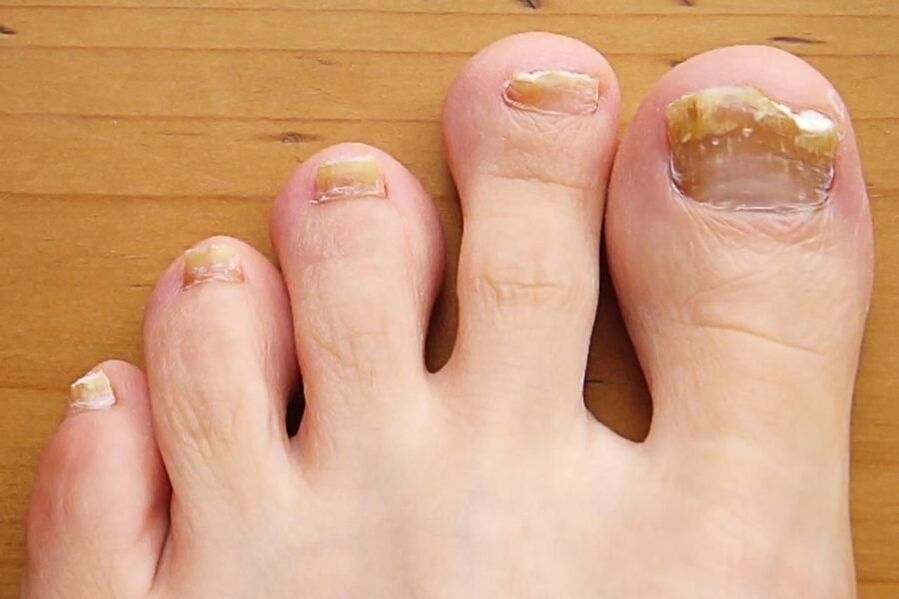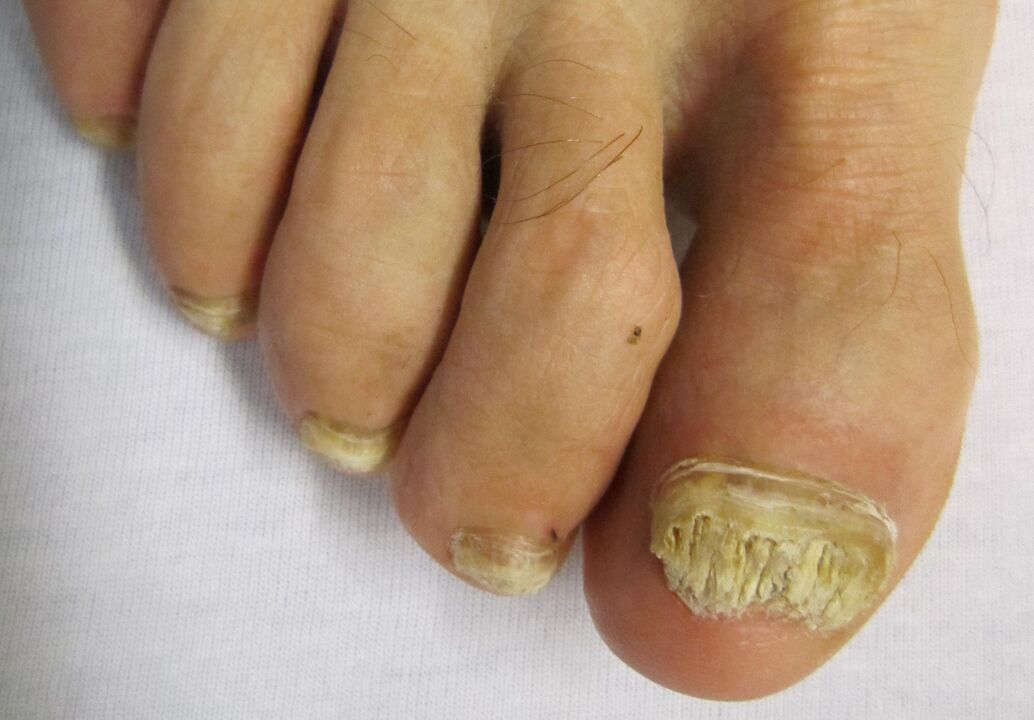Considering that more than 20% of the world's population is currently infected with fungus on the feet and sometimes on the hands, many know how unpleasant this disease is and what its consequences are. However, not everyone knows the information about the microorganisms that cause this disease and the types of nail fungus.
In addition to the forms of the disease, its specifics and methods of treatment, it would be useful to know how many different types of fungi lead to the destruction of nails and lesions in various areas of the feet and hands.
Causes of the disease and its symptoms
With the causes of the disease, everything can be quite complicated, since a person is easily infected with a fungus, both due to the weakness of his body and the fact that he is exposed to constant contact withinfected people or objects.

Currently, the main causes of the disease are:
- Visit saunas, showers and public swimming pools;
- Increased sweating of the feet;
- Using someone else’s shoes or hygiene products;
- Low immunity and so on.
Manifestations of the fungus in the affected areas include the following symptoms:
- Formation of scales on the skin of the feet and nails;
- Skin peeling and itching;
- Appearance of cracks;
- Thickening of infected skin and nails;
- Nail color changes;
- Destruction of the nail structure.
Important!
In any case, toenail fungus and any other form of its manifestation cause a lot of trouble and therefore it is worth promptly taking care of the prevention and treatment of the disease.
Forms and types of diseases
In this case, everything is quite complicated, since the types of fungal nail diseases are distributed according to different criteria.

The classification is as follows:
- Depending on the depth of penetration and location of the fungus;
- Depending on the size of the nail thickening;
- By pathogen type;
- By stage of development (early, second, advanced).
If we take as an example the type of pathogens, then in this case the patient will have to study Latin names for a long time, so it is not worth delving into unnecessary information with names, it is better to understandin detail the manifestations of nail fungus and how all this is reflected on the nail plates.
Classification by depth of penetration and location on the nail
In this case, the forms of the disease are distributed according to the following points:
- Distal. This type of onychomycosis appears on the extreme part of the nail (free), and is characterized by a change in color and the beginning of delamination with destruction of the structure. Additionally, the spot begins to grow;
- Lateral. The main signs are similar to the previous form, but the color of the nail changes on one or both sides of the nail;
- White surface. This form of fungus results in the appearance of several spots on the nail, which ultimately leads to its complete destruction;
- Proximal. The disease begins from the cuticle (it becomes inflamed) and gradually spreads to the entire nail, destroying it;
- Total onychomycosis. The color of the entire nail plate changes, which leads to faster destruction.

Classification according to the size of nail thickening
This classification has only 3 forms, making it possible to separate the levels of compaction to which a nail infected by a fungus succumbs.
In this case it is:
- Normotrophic form. With this form of the disease, separate foci of the disease appear on the nail, which have a slightly different color. The thickness of the nail does not change;
- Hypertrophic form. The nail begins to thicken, changes color, deforms, gradually collapses and it is no longer so comfortable for the person to walk;
- Onycholytic. With this form, nail fungus leads to detachment of the layer from the finger, and if you delay treatment and bring everything to this point, you will not have to think about saving the nail.
Of course, the types of nail fungus themselves are divided depending on the pathogen. There are three main types of microorganisms, but they have their own varieties.
Classification by type of pathogen
In this case, three types of pathogens can be distinguished, each of which has its own subspecies. It should be noted that these microorganisms can also appear on the hands, but since hand hygiene is more common, this happens less often.
The breakdown looks like this:
- Mold. This is one of the simplest forms of fungus because the mold is unable to penetrate deep into the affected area. However, manifestations on the toenails remain possible. The main signs are a change in color, from black to green. Sometimes spots of the same color may appear on the skin of the fingers. There are more than 5 types of mold;
- Dermatophyte. There are 3 main pathogens that cause more severe symptoms. The appearance of gray and yellow stripes, detachment of the nail and, even worse, microorganisms of this type are capable of infecting the entire foot;
- Yeast mushroom. This fungus is well known because it belongs to the genus Candida, also responsible for the development of thrush. Characteristics of the symptoms of infection with such a fungus are a decrease in the thickness of the nail, a change in its color to gray, peeling and damage to the finger, up to its inflammation.
It should be noted that due to the presence of subspecies, only a specialist will be able to prescribe appropriate medications against the fungus; an independent selection of remedies will simply be useless.
Finally
Some experts identify other forms of the disease, taking into account the manifestations of the disease on the hands. However, guided by the types known to science, you can understand what kind of fungus it is by examining the symptoms that appear.
But this does not mean at all that you can self-medicate in this way, because there are other diseases that lead to a change in the color of the nail, as well as its peeling. For this reason, if a fungus suddenly appears on your nails, you should immediately consult a doctor, for example, a dermatologist, and take a comprehensive approach to solving this problem.















